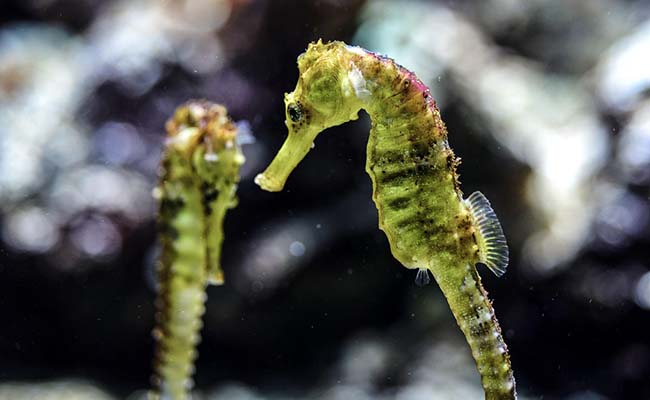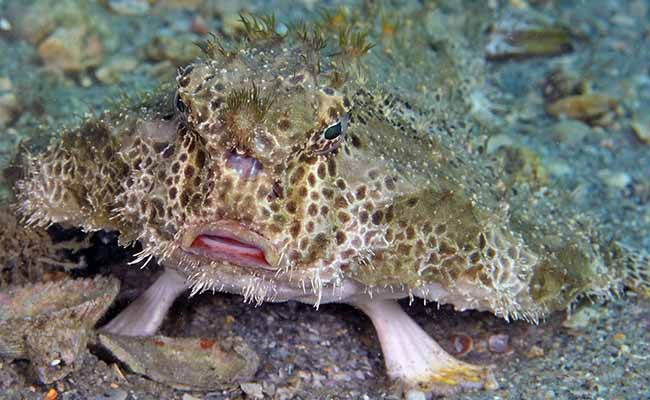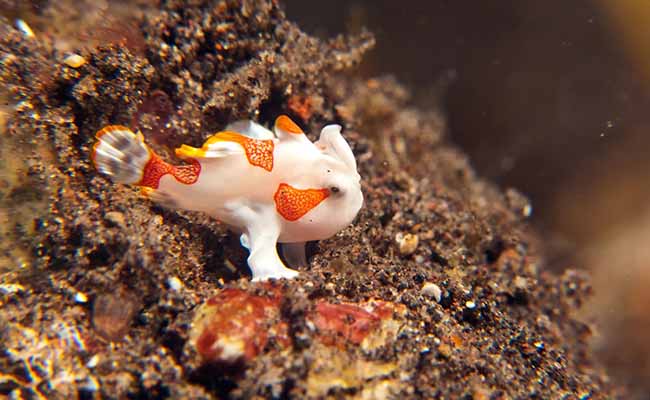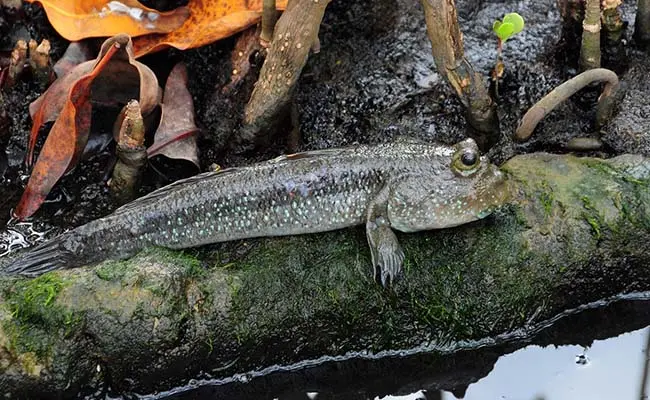We all know the image: a graceful fish swimming like a real queen in water. However, we are willing to bet that there are fish out there that don’t follow this expectation at all. There are fish that swim poorly, yet there are those that cannot swim at all or cannot exist outside water. I wish you a pleasant stay on our website today as we immerse ourselves in the strange world of fish. Starting from slow-moving walkers at the bottom of the sea to fishes that are not very mobile, you are going to be surprised at the variety of fish creations.
Content Table
What Kind of Fish Can’t Swim
Here are a few examples to consider, fish can’t swim.
1. Seahorses
| These peculiar fish have a body that makes them very poor distance swimmers. Their dorsal fin is insignificant and suitable for only short and limited mobility. However, seahorses have powerful tails to attach themselves to plants, such as seaweed and corals, letting them move with the tide, and filter feeding on plankton. |  |
2. Batfish
| Like bottom-dwelling fish, it is equipped with pectoral fins that resemble tiny legs rather than fins for swimming. With these fins they ‘walk’ or rather scootch over the seabed, jumping forward with little leaps. |  |
3. Frogfish
| These appropriately called fishes are the real predators, which prefer to lie in wait and blend with the water weeds or sponges. They do not move a lot but simply float and use a kind of fake dorsal fin to attract the other fish close enough to grab. |  |
4. Spiny devilfish
| Also known as angler fish, these deep-sea creatures have a dorsal fin that extends forward and bears a light to attract their prey. They do not swim much and prefer to lounge and wait for their food to be brought to them. |  |
Why the Fish Can’t Swim
Here’s the analysis of the factors that may contribute to the poor swimming abilities of these fish.
Body Shape
Some fish such as seahorses and frogfish have thick and bulky structures which are not conducive for swimming. That’s why their strategy is to blend in with the surroundings and not move a lot to catch their prey. Their fins are not muscular enough to enable continuous swimming over long distances.
Habitat
Some fish dwell at the bottoms of the seas; batfish and angler fish, commonly known as spiny devil fish. They have also evolved to scoot or even use some bait to catch their food instead of having to run after their prey for many miles.
Predatory Strategy
Lungfish and frogfish are sit-and-wait type predators. Selectors still use the strategy that requires the predator to remain inactive and hidden until its target comes closer. Swimming around would be counterproductive to the purpose of disappearing into the reeds.
Fish Can’t Stop Swimming
Fish that can’t stop swimming.
- Yellowfin Tuna: These speedy fish use a technique called obligate ram ventilation. Over their gills, they require a steady stream of water, from where they draw oxygen. This means they have to swim with their mouth open and use pressure to push water through the gills.
- Sharks (Many Species): As with tuna, many shark species such as great white, mako, and thresher sharks employ obligate ram ventilation. Their gill structure requires regular motion for respiration. But unlike tunas, some of the sharks, such as the white tip reef shark, are capable of blowing water over their gills while lying at the bottom.
Other Examples:
Swordfish
These powerful fish also use what is known as ram ventilation for their breathing needs. They have long snouts that enable to them cut through the water like knives, but they also have to swim for oxygen.
Mobula Rays (Oceanic Manta Rays)
These magnificent leviathans do not have a swim bladder, and they have to swim constantly to force water through their gills.
Fish That Can Survive Out of Water
Some fish species can stay out of water for a considerable amount of time, while others, classified as “true fish”, need water to live. Here are some interesting examples:
Lungfish
| These interesting fish are commonly called a ‘living fossil’ and are the closest marine life to the terrestrial ones. They also have lungs and gills which enable them to breathe air whenever their water bodies dry up. Lungfish can pull into the mud and stay inactive for months on end. |  |
Mudskippers
| These fish are particularly famous for their mud-skipping abilities. They possess some changes to their gills and skin to enable them to extract oxygen from the surrounding air. Despite this, mudskippers can stay out of water for long periods, including going on land in search of food. |  |
Snakeheads
| These fish have the superstructure organ which enables these air-breathing fish to draw oxygen directly from the air. Snakeheads can go several days without water, crawling onto moist earth in search of more water to live in. |  |
Walking Catfish
| These catfish, as the name implies, possess a muscular body that enables them to ‘crawl’ on the ground using their ventral fins. They possess a labyrinth organ that assists them in their ability to pull oxygen from the air, allowing them to live out of water for longer periods. |  |
Final Words
The animal world has its share of novelties, and the underwater fish life is a good example. As it is seen, some fish are not similar to the usual image of a swimmer, and their tactics are very different. Seahorses, frogfishes, and anglerfishes all have small fins and are poor swimmers that have to camouflage, use lures, or ride on currents.
On the other hand, the tuna, sharks, and manta rays need to swim ceaselessly to breathe. Still more bizarre are lungfish, mudskippers, snakeheads, and walking catfish – fishes that can live out of water for rather a long time. From masters of disguise to amazing swimmers, the concept of fish is rather diversified.


Leave a comment